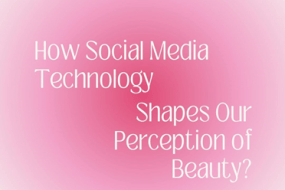
Innovation goes far beyond invention; It is the art of transforming ideas into advances in the most diverse fields of society and life.
You may already know that the word “innovation” resonates across all sectors and in countless ways, driving economic growth and transforming societies. But what classifies an invention or discovery as innovative or not is actually relative.
What was, after all, the world’s first innovation? Stone tools, fire control, language, agriculture, animal domestication, clothing, housing… The answer to this question depends on each point of view that surrounds it.
In the modern era, where the speed of technological change is unprecedented (and increasingly faster), “innovating” has become much more than a competitive differentiator; is, in fact, essential. Without innovation, there is no progress or transformation. And, without progress or transformation, there is no innovation.
What is Innovation and Why is it so Important?
The importance of innovation goes beyond mere economic or technological advantage. It is fundamental for the resilience and adaptation of societies in the face of contemporary challenges, such as climate change, global health and social inequality.
Innovation in clean and renewable technologies, for example, in addition to paving the way for a greener economy, is creating jobs, fostering new industries and promoting sustainable development.
Likewise, in the healthcare sector, innovations in biotechnology and medical informatics have revolutionized the treatment of diseases and improved the quality of life of millions of people.
Innovation also makes all the difference in the competitiveness of nations. Countries that cultivate innovative ecosystems, characterized by policies supporting research and development, quality education and collaboration between universities, industry and government, tend to lead the global stage, attracting investment and talent.
This shows that innovation and everything that is innovative are far from just about creating economic value.
Types of Innovation: Incremental and Disruptive
The types of innovation are categorized into two broad classes: incremental and disruptive. Both are essential for progress in a multitude of fields, but they differ in the way they affect markets and technologies (and are, at the same time, complementary).
Incremental
Incremental innovation refers to continuous and gradual improvements made to products, services or processes. These innovations comprise small updates, improvements or modifications that help maintain a company’s competitiveness and improve the way those same companies operate – and range up to larger innovations.
Improving fuel efficiency in cars or software updates on smartphones, for example, are considered incremental innovations. They are less risky, require fewer resources and are more predictable in terms of return on investment (ROI).
Microsoft
Microsoft is a technology giant – and, not surprisingly, it revolutionized the world with its software innovations.
In the 1980s, the launch of the Windows operating system transformed the use of personal computers, which became accessible to the general public – and in addition to accessibility, more intuitive and understandable computing was also introduced with Microsoft.
When Windows 1.0 was released in 1985, it was sold at a price of around 99 US dollars.
Since then, Microsoft has continued to innovate through its developments in cloud computing, artificial intelligence and productivity solutions. An example of its innovation is Microsoft Azure, a leading cloud computing platform that offers services to support and scale businesses and technologies around the world.
Faber Castell
Faber-Castell, known for its high-quality writing tools, has a long and rich history of innovation. In addition to being a pioneer in the manufacture of pencils, the company also stands out for introducing the process of mass production of wooden pencils and for innovating the use of environmentally friendly materials.
They were the ones who introduced the “green pencil”, made from sustainable wood, marking a commitment to environmentally responsible production practices. This innovation, in addition to improving the company’s sustainability, set industry standards for ecological practices.
Coca-Cola
Coca-Cola is a classic example of innovation in branding and marketing. In addition to its secret beverage formulation, Coca-Cola revolutionized advertising and marketing. What do they sell? Hope, inspiration, innocence, dreams and happiness. What are? Carbonated water, sugar, cola extract, caffeine, coloring and phosphoric acid.
The company was one of the first to use mass merchandising and advertising campaigns that appeal to universal feelings and experiences, such as the unforgettable “Share a Coke”.
Coca-Cola also innovated in packaging, introducing the first contoured bottle, which became a cultural icon and helped distinguish the brand in a competitive market.
It is no coincidence that the company is involved in sustainability innovations, such as the use of recyclable materials in its packaging or the brand’s own returnable bottles, for example.
Disruptive
Disruptive innovation, on the other hand, refers to the creation of products and services that eventually destabilize and transform an entire market or industry.
At first, these innovations may be underestimated by well-established markets, industries and sectors. Over time, disruptive innovations begin to surpass current technologies and, in some cases, replace market leaders.
A classic example of disruptive innovation is the replacement of film cameras with digital cameras. Disruptive innovations often create new markets and change the rules of the game, requiring a more risky and visionary approach to innovation.
Digital Banks
Digital banking innovations have transformed the financial sector. Physical agencies? Only if you want. Online financial transactions? Yes!
The creation and implementation of digital banks democratized access to banking services, reduced costs and increased user enjoyment, also boosting financial inclusion in regions less served by traditional banks.
Streamers
On platforms like Twitch and YouTube, streamers and their broadcasts have revolutionized entertainment and media.
Streamers create live content, interacting directly with those who watch them, which has changed and revolutionized the way the audience of creators of this type of content consume entertainment, reducing dependence on fixed programming and traditional films, for example.
Live streaming has also brought with it new career paths and monetization possibilities for individual content creators.
Communication apps
Communication apps (among them WhatsApp, Telegram and Signal) have redefined the way we communicate.
It is through them that we send instant text and voice messages, make and participate in voice and video calls and share photos and other files with convenience and speed.
The impact generated? More accessible and instantaneous global communication, which strengthens personal and professional connections and generates a faster response in business and personal contexts.
The latest trends in innovation
Technology, sustainability, personalization… innovation does not stop (and cannot stop). Among the latest innovations, which are not few, are:
- Artificial Intelligence (AI) and Machine Learning;
- Internet of Things (IoT);
- Green Economy and Sustainability;
- Virtual Reality (VR) and Augmented Reality (AR);
- Telemedicine and Digital Health;
- Blockchain and Cryptocurrencies;
- Mass customization.







